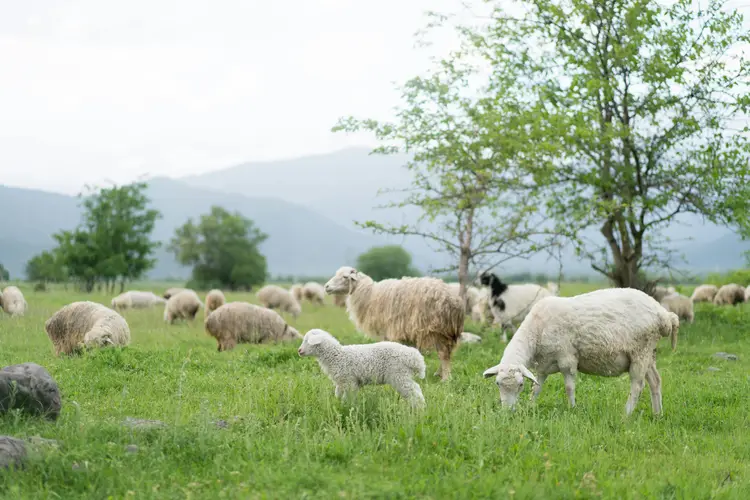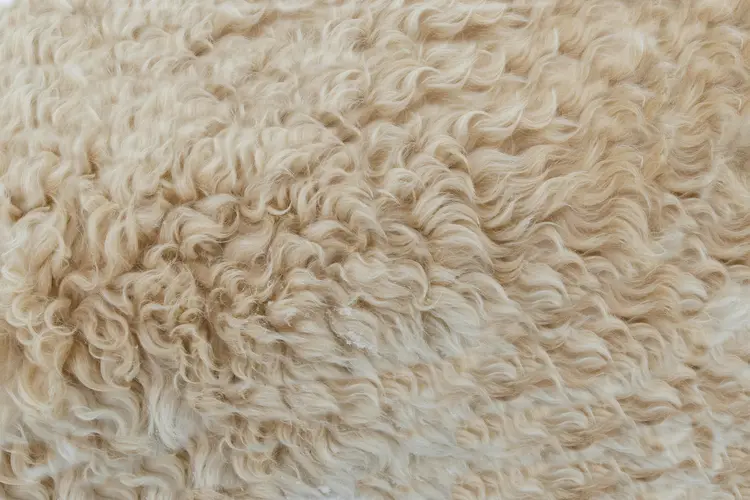What Is Merino Wool?
Merino wool is a favorite fabric worldwide, prized for its affordability and durability. Harvested from Merino sheep, this wool is not only cost-effective but also resilient, adding to its broad appeal. Like all wool, Merino is highly absorbent, water-resistant, and insulating, making it perfect for undergarments layered under winter attire. With proper processing, Merino wool can achieve a luxurious softness, countering the usual itchiness of traditional wool. Available in various grades, ultra-fine Merino wool is particularly well-suited for blending with silk or cashmere, offering a touch of luxury.
History of merino wool
Merino sheep appeared in southern Spain during the 12th or 13th century. The exact origins of these sheep are debated; some scholars think they were imported from Morocco, while others believe they resulted from selective breeding between Spanish sheep and Moroccan rams. What is certain is that Merino sheep display characteristics of both European and Arabian breeds, suggesting careful breeding for superior fibers.
During the Islamic occupation of Spain, wool production was not a priority. The first historical records of distinctly Merino wool date back to the early 15th century. Recent genetic studies indicate that modern Merino sheep are the result of multiple crosses between Spanish Churro sheep, Italian wool-bearing sheep, and even English breeds. The specific points in history when these crosses occurred are unclear. Nonetheless, by the end of the 15th century, Merino sheep had positioned Spain as a strong competitor to England in the European wool market.
In the 16th century, English wool was increasingly kept for domestic use, allowing Spanish Merino traders to dominate the European market. Spanish shepherds annually moved their flocks from north to south with the seasons, and Merino wool exports became a significant contributor to the Spanish economy.
Exporting living Merino sheep was a capital offense in Spain until the 18th century. In 1723, however, Spanish merchants exported a small number of Merino sheep to Sweden. Later, family ties between English and Spanish royalty facilitated the export of many Merinos to the British Isles. From that point on, Merino sheep exports became common, spreading the breed throughout most of Europe.
The Australian Merino industry
The Napoleonic wars dealt a severe blow to the Merino industry in Spain, causing a downturn in wool production throughout Europe. However, just before Napoleon’s ascendance, savvy entrepreneurs had already introduced the Merino breed to several British colonies, including South Africa and Australia.
While the Merino wool trade in South Africa remained modest, the initial export of Merino sheep to Australia would profoundly impact the continent’s economy. Early colonization efforts in Australia faced significant challenges, yet by 1810, the country boasted over 30,000 sheep. These flocks rapidly multiplied across Australia’s sub-tropical and semi-arid regions.
Merino wool Nowadays
Today, Australia is home to an impressive population of over 71 million sheep, with approximately 53 million of these being Merino sheep. While Merino sheep are also raised in other countries, notably the United States, Australia indisputably leads as the world’s foremost sheep producer. The majority of global Merino wool comes from Australia, and the wool trade plays a vital role in the country’s export economy.
Over time, the uses of Merino wool have evolved. Its use in formal wear has declined, but it has become increasingly popular for casual, insulating garments. Despite being widely available and relatively affordable, Merino wool maintains its reputation for exceptional softness and luxurious feel.
How is merino wool fabric made?
The process of producing merino wool involves several key stages:
- Shearing: Merino sheep are sheared periodically, with some breeds ready every 2-3 months and others every six months. They can yield between 3 to 18 kilograms of wool annually. The wool obtained immediately after shearing, known as “greasy wool,” retains natural oils from the sheep’s skin.
- Cleaning and Carding: Greasy wool undergoes cleaning, grading, and carding to form long, thin strands. These carded strands are prepared for the spinning process.
- Spinning: Merino wool is spun according to its grade, and the spun yarn is wound onto reels in preparation for weaving or knitting.
- Weaving or Knitting: Most merino fabrics are woven in plain or twill patterns, although industrial knitting machines can also knit merino wool yarn. Yarns are dyed individually before weaving or knitting for fabrics requiring multiple colors.
- Dyeing and Post-Treatment: Single-colored merino fabrics may undergo dyeing after weaving or knitting. Some merino wool may receive treatments like waterproofing, although these are infrequent due to its natural flame-retardant properties.
How is merino wool fabric utilized
- Uses in Apparel:
Merino wool is predominantly used in sweaters, prized for its softness that rivals or exceeds cotton. Its soft feel makes it perfect for lightweight sweaters worn close to the skin. Merino wool is also utilized in shirts, blouses, and tank tops.
Even in its coarser varieties, merino wool can be fashioned into blazers. Its blend of durability, soft texture, and thermal properties makes it suitable for long underwear or base layers. While merino wool can be used in various insulative clothing, it’s commonly seen in casual wear or sportswear rather than formal attire.
- Uses in Homewares:
In homewares, merino wool is extensively employed in blankets. Its excellent insulative qualities make it ideal as a middle layer between sheets and comforters. Merino wool is favored for throw blankets as well, appreciated for its luxurious softness and exceptional heat retention.
Where Is Merino Wool Produced?
Australia stands as the top global producer of merino wool, generating nearly 350 million kilograms each year. It holds the largest population of merino sheep globally, and wool production is deeply embedded in its rural heritage. Significant quantities of merino wool are also harvested in the United States and South Africa.

What is the price of merino wool fabric?
Merino wool is usually one of the more budget-friendly types of wool fabric, despite its luxurious softness. Australia’s extensive breeding of Merino sheep guarantees an ample supply that easily meets demand, keeping prices lower for this fabric. Compared to cashmere, mohair, or other soft wool types, most grades of merino wool are less costly, and sometimes nearly as affordable as cotton. The highest grades or organic varieties of merino wool typically fetch the highest prices.
Merino Wool Benefits
- Natural: Merino wool consists mainly of proteins derived from amino acids and natural compounds. This natural and renewable fiber allows each sheep to produce four to five pounds of wool annually. Evolving over time, merino wool has adapted to keep sheep comfortable in various harsh environments, handling temperatures ranging from 5 to 95 degrees Fahrenheit effortlessly. It stands as a remarkable example of a natural fiber.
- Assists in Regulating Body Temperature: What does Merino wool excel at? It’s great at regulating your body temperature. In cold weather, its natural crimps and fiber bends trap air to insulate you. In warm weather, it effectively wicks sweat away from your skin, keeping you cool and dry.
- Keeps You Dry and Sweat-Free: This wool benefit involves a bit of technical detail, so bear with us. Merino wool effectively removes sweat and moisture from your skin as vapor. Its fibers are naturally porous, made up of small plates that allow moisture vapor to pass through. This means you won’t feel wet, cold, or clammy after working out. In contrast, synthetic fabrics are usually non-porous. They tend to absorb sweat in its liquid form, requiring your body to heat it up to evaporate, which can leave you feeling clammy in colder conditions. Merino wool streamlines this process, helping you stay warm and dry while active outdoors.
- Good For Layering: When it’s freezing cold and you need to layer up, opting for all Merino wool is a wise choice for managing sweat and excess heat. Each layer of Merino wool effectively moves sweat from your skin to the outer layers of your clothing as vapor, keeping you warm and dry. Adding a synthetic layer interrupts this vapor escape route, potentially leading to feeling chilly and clammy.
- Odor: Merino wool exhibits an antibacterial effect due to its scaled fiber surface, making it resistant to the formation of unpleasant odors.
- Biodegradable: Merino wool breaks down entirely within approximately 12 months when buried in the soil. This means that when you’re done with your gear, the earth will naturally decompose this protein-based fiber composed of amino acids, returning carbon and nutrients to the soil.
- Fire-Resistant: Most outdoor gear is bound to face campfires at some point. Unlike nylon and polyester, Merino wool typically doesn’t melt or catch fire. Nylon starts melting around 320 degrees Fahrenheit, while polyester begins to melt at approximately 452 degrees Fahrenheit.
What environmental impact does merino wool fabric have?
Merino wool is widely praised as one of the most environmentally friendly textile options available. Its production avoids the use of artificial pesticides, fertilizers, or agrochemicals, and most merino sheep graze naturally, minimizing long-term harm to local ecosystems. The wool itself is biodegradable, posing no threat of contributing to plastic pollution, and generally does not require flame retardants or other chemical treatments.
However, a notable environmental issue associated with merino wool production is soil erosion. Poor pasture management by merino sheep can lead to damage of vegetation and soil, potentially causing areas to become barren and infertile. This risk can be mitigated through sustainable breeding practices and conscientious land management.
On an ethical note, the practice of mulesing among merino sheep has sparked significant controversy. This procedure involves removing skin around the sheep’s anus and genital area to prevent flystrike, a painful parasitic infection. While mulesing reduces the risk of flystrike, it is criticized for its impact on animal welfare. Despite this concern, merino sheep in Australia and elsewhere generally live peacefully, occasionally sheared for their wool after undergoing mulesing early in life.
You may also like:
- Supima Cotton: Properties, Production, and Origins
- Using a Seam Ripper: A Step-by-Step Guide
- Organza Fabric: Traits, Manufacturing Process, and Origins
- Different Types of Sewing Machines
- Micromodal Fabric: Characteristics, Production, and Origins
- Sewing Machine Parts And Functions
- Count of Yarn: Explanation and Varieties
- Yarn Manufacturing Process
- Varieties of Woven Fabrics and Their Applications
- Non Woven Geotextile Fabric
- What is Sisal Fiber? Properties, Structure, and How It Made?
- How to Tie Dye Shirts: A Step-by-Step Guide
Share this Article!

